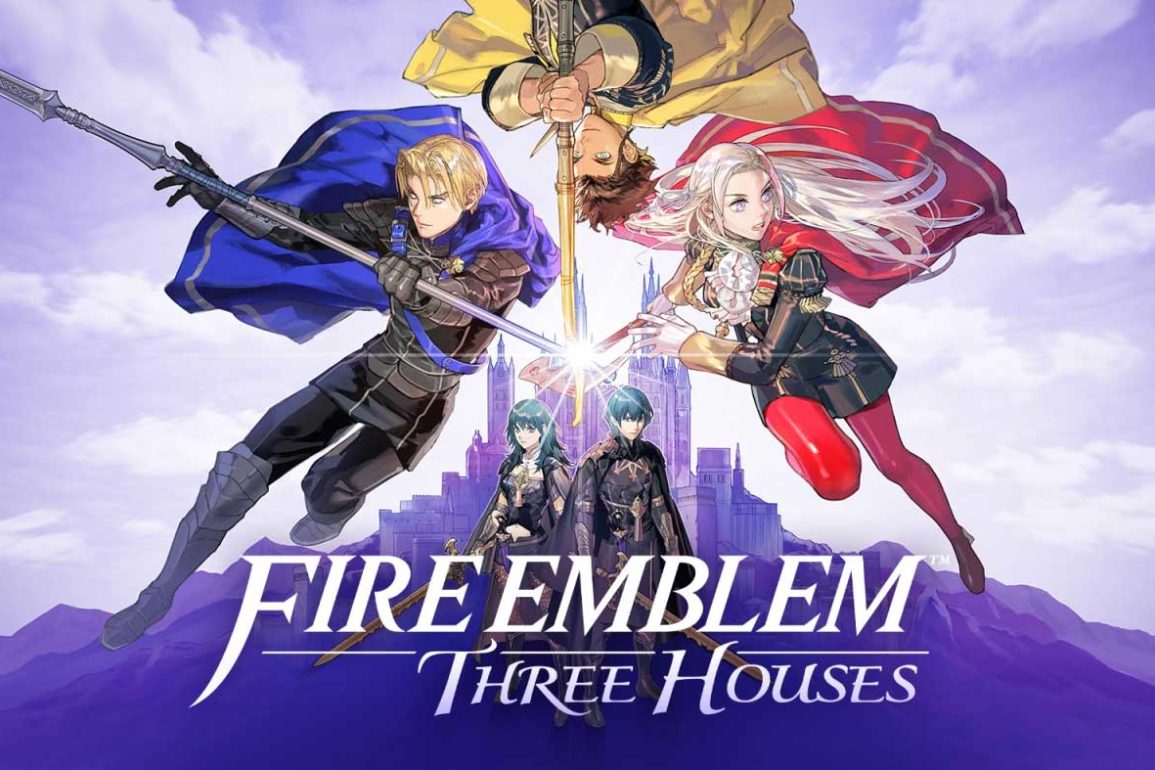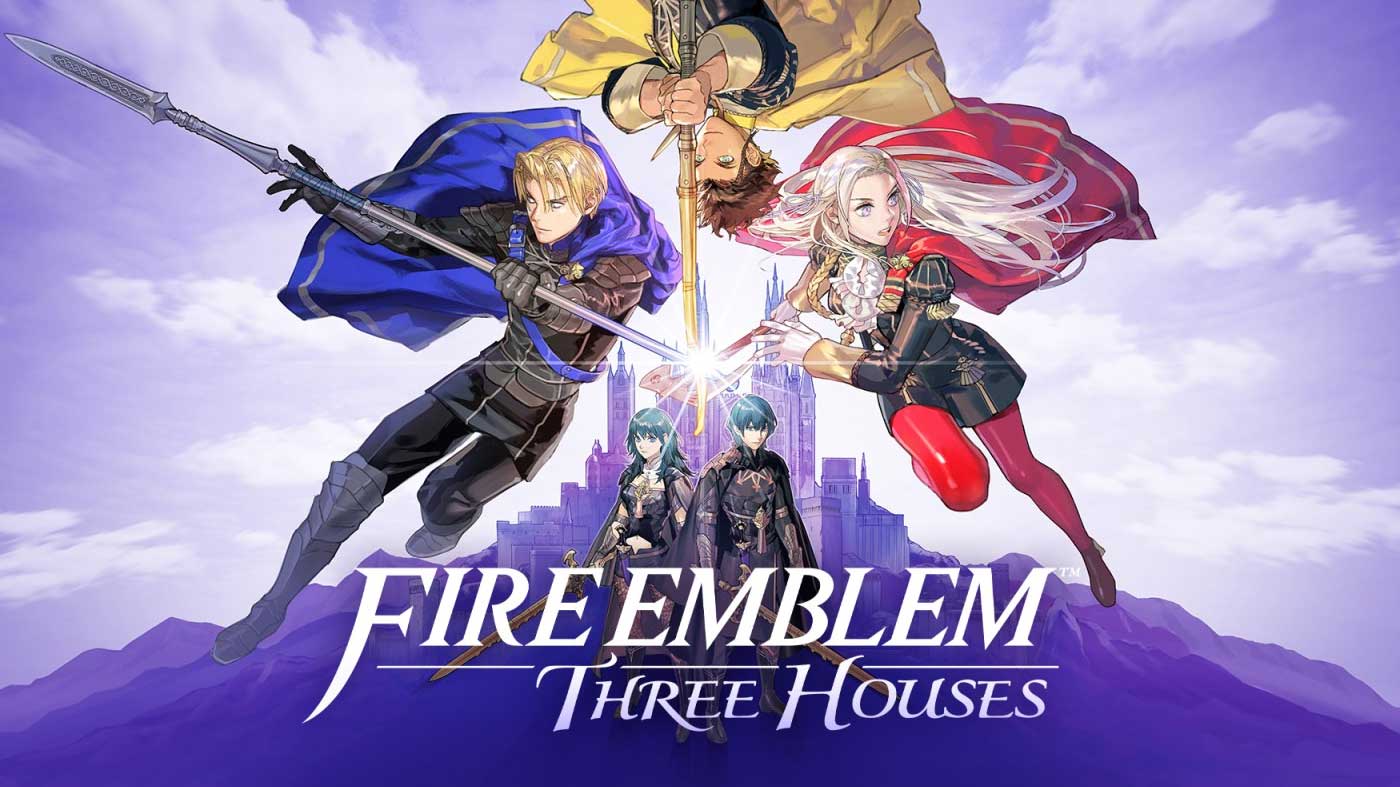Fire Emblem as a franchise has been growing a little bit stagnant for me lately. I adored Awakening but struggled to drag myself through the three lengthy storylines of Fates. Following this self-declared franchise fatigue, I, unfortunately, didn’t play much of Echoes when it released two years ago. Now, with Three Houses, Nintendo and Intelligent Systems (with the help of Tecmo Koei) have breathed new life into the franchise, though with some pretty strong caveats.
Fire Emblem: Three Houses takes place on the continent of Fódlan, which is divided into three previously warring nations who now find themselves at peace. Within the center of the continent is the Garreg Mach Monastery, a neutral territory that houses the Church of Seiros and the Officer’s Academy. It’s here where you follow the story of Byleth. Your Byleth, male or female, is a mercenary turned professor who must teach and nurture the future heirs of the three nations, along with other students at the Monastery.
I’ve been purposefully vague about Three Houses’ story because it’s a rather enjoyable tale from beginning to end. The lore of the land is established well, and the backstory of all the characters you encounter is explored well if you wish to pursue it as such. The twists are genuinely surprising, and the way each of the paths comes together is great too. I enjoyed immersing myself in the politics of the world and the drama of it all, honestly.
As someone who had grown tired of the Fire Emblem games, Three Houses wasn’t initially on my radar at all. It’s clear from the beginning that Three Houses is trying to do something different to all that came before it. The crux of the experience is still the same – you’ll lead a group of units into battle, and your relationship between the units will affect how well they perform. It’s what you do between fights where Three Houses changes the most. While it’s one of the most in-depth experiences I’ve had with a Fire Emblem game, it’s not quite for everyone.
The greatest thing about Three Houses is how the setting synergises so well with the core tenets of what Fire Emblem is all about. Now, when you’re not in battle, you’ll be engaging with your students about the things they want to learn and helping them out in side-quests while exploring the Monastery. Like a light Persona game, you’ll have to decide how to spend your free time in the Monastery. You can focus on the same students or try to spread yourself around your whole class, and it’ll affect how they perform when in their formal lessons or exams.
It just feels like a much more organic way to foster the relationships between your units, and does a great job at bridging the gap between story and gameplay.
Lessons and exams are where you’ll develop most of your units’ abilities. You can assign your students a “goal” for them to work towards (i.e. axe skills) as well as encourage them to take exams to specialise them into greater units. Mastering each of these specialties grants permanent bonuses and abilities too, so you’re encouraged to jump between them as you progress. Students will come to you if they’re not feeling a path you’ve put them on and suggest a path they’d instead follow – to which you can accept or refuse. It’s a remarkably clever way to tie the story and character interactions into the gameplay and naturally means you’ll develop a bond with your units.
If all this micromanagement sounds daunting to you, you can “auto instruct” your students while jumping from battle to battle without any major repercussions. You’ll get the most out of your units if you manually tend to their needs, wants, and dreams, but it’s by no means a requirement to enjoy the game. This is perhaps the most significant design strength of Three Houses in that it lets you indulge in as much of the extraneous content as you wish without limiting your experience for doing so.
A lot of care and attention has gone into these interactions; however, as Three Houses is rife with them. There is heaps of dialogue recorded for interactions between all characters, even NPCs. Those who’ve grown attached to the series for its interpersonal relationships will absolutely adore Three Houses as there’s a whole heap to do here with higher production values than ever. But those who value the strategy and the battles in a Fire Emblem game will possibly come away from the game disappointed.
I say this because while Three Houses is a meaty package, the battles feel like they take a bit of a back seat to the story and your support relationships.
But don’t fret – the battles themselves are better than ever. Units no longer trade blows as if they are taking turns in battle (even though they are) but instead animate fluidly to give the game a more cinematic look and feel. Controls are intuitive too, and it is easy as ever to cycle through your units, check information, and execute your attack quickly with ease. You can now assign battalions to your units as well, offering you a unique “Gambit” attack as well as buffs. This has a great effect on the presentation, too, giving the battles a greater sense of size and scale.
And while the battles are great, there doesn’t seem to be enough variety of them in Three Houses. You can expect most of the encounters in the game to involve taking down a commander, killing all units or just moving a specific unit to a particular space on the map. It’s a tried and true formula, but it’s also a design habit that gets rather tired after doing the same thing across over literally hundreds of hours of gameplay. This issue is compounded more so by the lack of map variety which could be better visually, even just from a gameplay perspective to provide more strategic approaches to battle.
Which all dovetails somewhat problematically to the other issue plaguing Three Houses – the game poses little challenge to returning series veterans. Perhaps even more frustrating – difficulty options that unlock towards the end of the game should’ve been there from the start for those wanting a challenge. I respect that the developers want the game to be more accessible to fans – and the easier modes in place do that fantastically – but the challenging modes, including the series’ mainstay Classic mode still felt like a breeze especially if you use Divine Pulse, which works in a similar fashion to Mila’s Turnwheel in the previous game.
Such little variety does no favours for the game’s length, which is more than generous. As mentioned before, if you’re in it for the story and the characters, Three Houses does its earnest to appeal to you with a very generous helping of lore and character development. Each of the three houses will take most players at least forty or so hours to complete – my first, more relaxed path took over fifty but additional, rushed paths took around thirty or so. No matter how many paths you want to do, Three Houses still represents tremendous value for money even if you complete only one path. Though if you’re here for the battles more than the story, your enjoyment may vary.
As eluded to previously, the production values of Three Houses are through the roof. Every piece of dialogue, no matter how significant is voiced, even if some of the performances are a tad hammy. The visuals, in-game and in the superbly produced cutscenes, give life to critical moments throughout the story even if there are some performance issues during intense moments in battle. And the soundtrack can’t be forgotten either – giving considerable gravitas to the significant battles and dramatic moments throughout the story.











